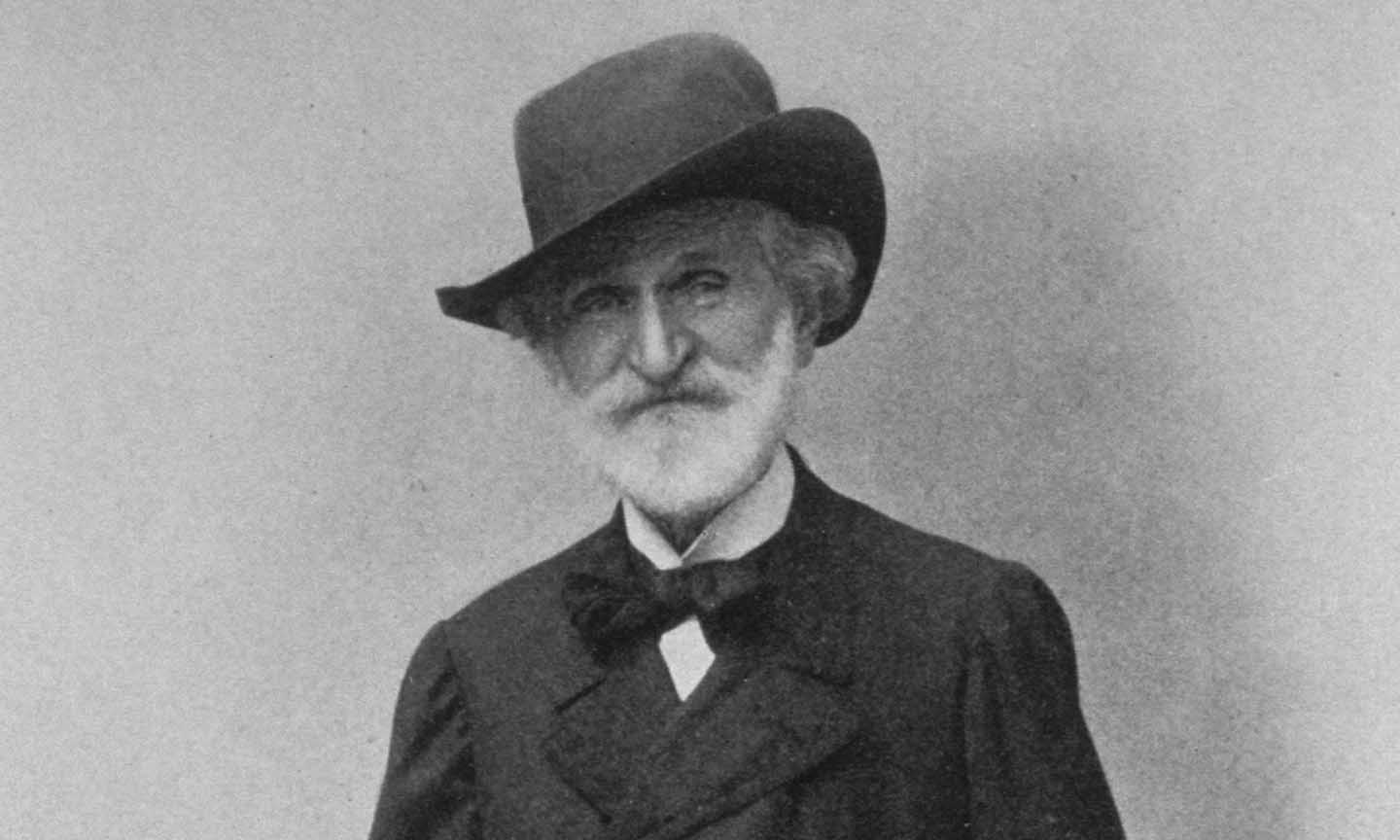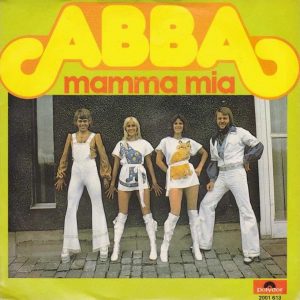Verdi’s Requiem is one of the most famous and enthralling settings of the Catholic funeral mass. The work was composed in memory of the Italian poet and novelist Alessandro Manzoni, who was profoundly admired by Verdi, and it was first performed on May 22, 1874, on the first anniversary of Manzoni’s death. The reaction was ecstatic and Verdi’s Requiem was acclaimed as a masterpiece.
Listen to our recommended recording of Verdi’s Requiem, performed by Joan Sutherland, Marilyn Horne, Luciano Pavarotti, Martti Talvela and the Vienna Philharmonic conducted by Sir Georg Solti, on Apple Music and Spotify.
On learning of the death of Rossini in November 1868, in a letter to his friend the Countess Clarina Maffei, Verdi wrote: “His name was the most extensive, the most popular reputation of our time, one of the glories of Italy. When the other (Alessandro Manzoni) who still lives has gone, what will we have left?”
Three days later, on November 17, Verdi wrote to his publisher Giulio Ricordi proposing a Requiem Mass in Rossini’s memory to be written in collaboration by “the most distinguished Italian composers”. Thirteen composers agreed to participate (quite what the superstitious Rossini would have made of that is a moot point) of whom only one, Antonio Bazzini, is remembered today (his dazzling violin showpiece La Ronde des Lutins is still a popular encore). The final section of the Requiem mass, ‘Libera me’ was assigned to Verdi. In the event, the inspired plan came to nothing: the proposed first-anniversary performance fell through and the Messa per Rossini was not heard in public until 1988.
Deeply impressed by the ‘Libera me’ setting, nevertheless, a professor of composition at the Milan Conservatory contacted Verdi and tried to persuade him to complete the full Requiem himself. Verdi’s response was unequivocal. “I have no love for useless things,” he told the professor. “Requiem Masses exists in plenty, plenty, plenty! It is useless to add one more to their number.”
Manzoni’s death affected Verdi deeply
Less than five years later, Manzoni died at the age of 88, four months after he had slipped on the steps of Milan’s church of San Fedele, hitting his head. To the recently united Italy and its people, the passing of their great poet, novelist, humanist, and advocate of reunification was cause for national mourning. His death affected Verdi deeply. Following his first meeting with the writer-statesman back in July 1868 he had written to Maffei: “I would have knelt before him if it was possible to worship men.”
Manzoni’s state funeral was arranged for 29 May 1873 in the church of San Marco. “I haven’t the heart to attend his funeral,” Verdi wrote to Ricordi. “I shall come in a little while to visit the grave, alone and without being seen, and perhaps (after further reflection, and after I have weighed up my strength) I’ll suggest something to honor his memory.”
“I would like to compose a Mass for the Dead”
Four days after the funeral, Verdi did indeed visit the grave. The following day, he wrote once more to Ricordi: “I would like to compose a Mass for the Dead, to be performed next year on the anniversary of his death. The Mass would have rather large dimensions, and in addition to a big orchestra and a big chorus it would also require (I cannot be specific as yet) four or five principal singers.”
Just how profoundly Verdi admired Manzoni can be judged further by the fact that while Manzoni was a devout Catholic, Verdi was an implacable foe of organized religion and, if not a diehard atheist, certainly a firm agnostic. At this level, the composition of the Requiem can be seen as the generous gesture of a friend. At another, though, the problems for an agnostic of setting the highly emotive Latin text of the Mass for the Dead were, for Verdi the supreme musical dramatist, not far removed from those of writing music to be sung by the Jews of the Old Testament in Nabucco or the Egyptian worshippers of the Sun God in Aida.
Verdi began work on the Messa da Requiem in Paris, June 1873. Its first completed section was a transformed version of the ‘Libera me’ composed for the Rossini Requiem (music that was to become the final section of the Manzoni Requiem) which in its new guise took advantage of the inimitable vocal accomplishments of the soprano soloist, Teresa Stolz (it now included a cruelly-exposed octave-leap to a top B flat to be sung pianissimo – a moment that has terrified sopranos ever since).
Verdi’s Requiem is a setting of the Catholic funeral mass
But what of the text of the Mass proper? Strictly speaking, the ‘Libera me’ section does not belong to the Missa pro defunctis (Mass for the Dead) but to the subsequent service for the Absolution of the Dead (the text asks God to have mercy upon the deceased person at the Last Judgement). Here is the sequence that Verdi set to music:
1. Requiem & Kyrie Eleison (Rest in peace, and Lord have mercy) –
Soprano, mezzo-soprano, tenor bass and chorus
2. Dies Irae (Day of Anger):
Dies Irae – Chorus
Tuba Mirum (Trumpets sounding) – Bass and chorus
Liber Scriptus (Open lies the book) – Mezzo-soprano and chorus
Quid Sum Miser (What shall I plead) – Soprano, mezzo-soprano and tenor
Rex Tremendae (King omnipotent) – Solo quartet and chorus
Recordare (Ah, remember) – Soprano and mezzo-soprano
Ingemisco (I lament) – Tenor
Confutatis (When the cursèd) – Bass and chorus
Lacrymosa (Day of bitter lamentation) – Solo quartet and chorus
3. Domine Jesu (Lord of Lords) – Offertory for solo quartet
4. Sanctus (Holy!) – Fugue for double chorus
5. Agnus Dei (Lamb of God) – Soprano, mezzo-soprano and chorus
6. Lux Aeterna (Light for ever) – Mezzo-soprano, tenor and bass
7. Libera Me (Lord, deliver me) – Soprano, chorus and final fugue
Verdi completed the score for his Requiem Mass the following April (1874) and began three weeks of rehearsals in early May.
The reaction was ecstatic
The reaction was ecstatic. A review of a performance Verdi conducted at La Scala three days after the premiere would seem to confirm this: “To follow the movement one by one would be quite impossible; but we will say, nevertheless, that all were applauded with rapture. The ‘Dies Irae’, with all the episodes which it comprises, was received with extraordinary favor. But at the ‘Offertorium’, the enthusiasm knew no bounds, and the public insisted on the repetition of this admirable quartet with chorus …They also encored the ‘Sanctus’, a fugue for double chorus, which was performed wonderfully. The magic wand of Verdi seemed to have electrified all the performers. At the ‘Agnus Dei’, the applause grew louder, and suppressed shouts broke out during the performance, so powerful was the inspiration which it revealed … After the ‘Offertorium’ had been repeated, a silver crown was presented to Verdi on a velvet cushion, whilst the public applauded with rapture.”
Verdi’s Requiem was acclaimed as a masterpiece
Verdi’s Manzoni Requiem was acclaimed as a masterpiece all over Catholic Europe (Paris alone mounted 15 performances in the first year), though enthusiasm in Protestant Britain was more muted: half-empty houses in the Royal Albert Hall prompted Verdi to leave in disgust. The chief themes of the work are terror, pleading, death, judgment, grief, and awe. After all, it is, as one writer put it, “a calculated intermingling of greasepaint and incense, circus and ceremonial.” There is little of the comfort to be found in Brahms’ contemporaneous Ein Deutsches Requiem or indeed Fauré’s gentle Requiem of 1887. Verdi himself described it as a “tribute of respectful affection, the expression of my sorrow … it is a heartfelt impulse, or rather necessity which prompts me to do honor as best I can to that Great One whom I so admired as a writer and venerated as a man, and as a model for patriotism.”
Recommended Recording
Our recommended recording of Verdi’s Requiem is performed by Joan Sutherland, Marilyn Horne, Luciano Pavarotti, Martti Talvela and the Vienna Philharmonic conducted by Sir Georg Solti. The performing forces represent the finest of the day with soloists who would command the international opera scene for the decades that followed. Solti’s dramatic sensibilities and opera house experience bring out the contrasts of Verdi’s great drama in this landmark recording that stands the test of time.
Our recommended recording of Verdi’s Requiem can be bought here.




